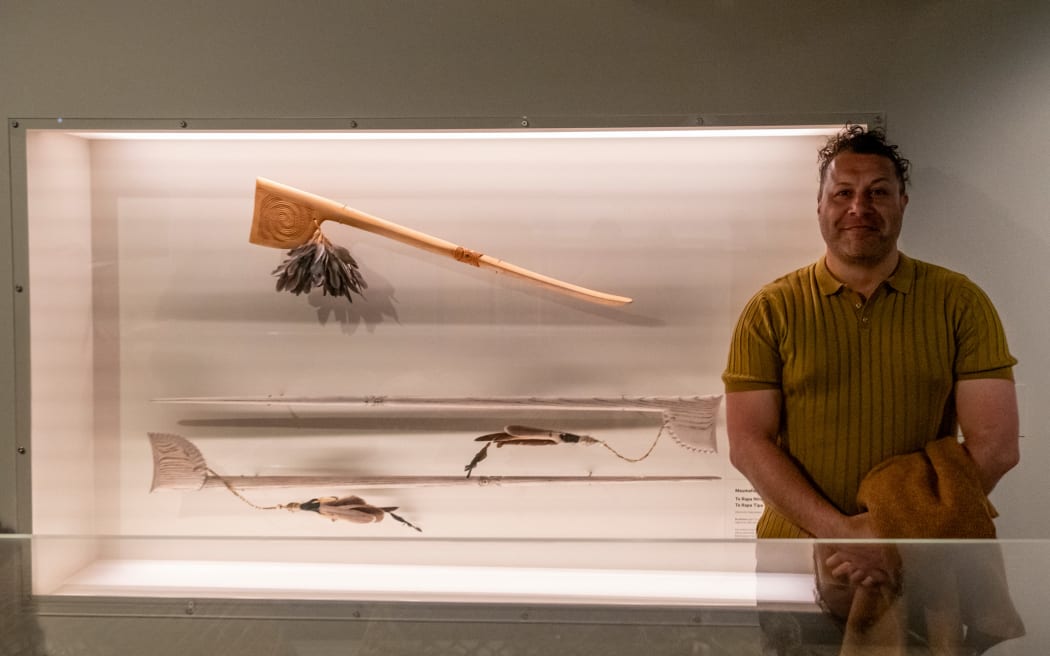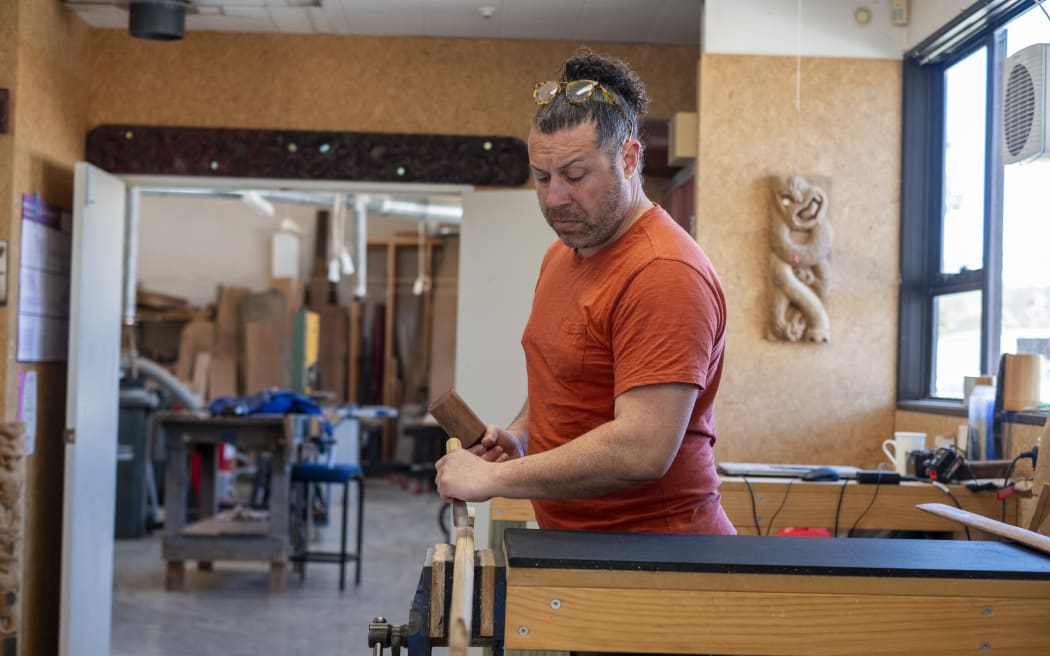
Photo: RNZ / Samuel Rillstone
Raised in the countryside, north of Tamaki Nui-A-Rua and Dannevirke in the lower North Island, Nui Stretch has the distinction of having two parallel careers in wood.
One is as a guitar maker - trained by some of the world’s best - and the other as a carver, now based at Karehana Bay, Porirua near his tūrangawaewae, Hongoeka marae.
Currently, Stretch is part of an exhibition for which he has made an ‘axe’ of a quite different type - from the guitar to tewhatewha, or traditional Māori long-handled weapon, with its axe-like head.
Exhibition Te Ohonga (The Awakening) is a response to an unusual collection. Wellington Museum Te Waka Huia O Ngā Taonga Tuku Iho holds taonga collected by a 19th century Martinborough businessman, George Pain. Yet the origins of these carved objects collected by Pain were never documented, and they have been sitting silently in the museum’s collection store for many years.
Until now. With organisation Toi Māori Aotearoa, the museum invited Māori artists from the greater Wellington region to create new works that awhi or support the taonga, bringing them to contemporary life.
The resulting works are being exhibited with the taonga until 21 July.

Nui Stretch creating Tewhatewha Photo: supplied
"[We are] very fortunate to see [the collection] again after so long hidden from the light of day," Stretch says.
The tewhatewha collected by Pain was carved from the bones of tohorā or southern right whale.
Stretch has made his from swamp ash. It is a material that demonstrates his interest in sustainability - traditional woods used for guitar making, such as Brazilian rosewood, are becoming "few and far between", he says.
Swamp ash also resembles whalebone as "it's got that cellular structure where the pores are quite open".
Stretch refers to the pieces collected by Pain as 'taonga whāngai' due to their lack of whakapapa, or provenance. It is hard to tell where they came from in Aotearoa as many appear to have been created for Pākehā customers, so have a blend of styles, he says.
For example, one walking stick features a snake and an apple alongside whakairo, or traditional carving patterns.

The Tewhatewha old and new at Wellington Museum Photo: supplied
Stretch's grandmother was deeply musical - she played the guitar, piano, accordion, violin and cello - and he grew up playing alongside her, as well as hearing and playing the guitar on the marae.
By high school, he was fascinated with “what actually makes those things tick” and decided to pursue a career in guitar making.
He studied in Arizona in the United States, then undertook an apprenticeship for 11 years under one of the world’s most respected luthiers, Roger Bucknall (MBE) of Fylde Guitars in Penrith, England.
As well as undertaking different commissions, he is now enrolled in kōwhaiwhai making and whakairo rākau (wood carving) under the guidance of well-known Ngāti Toa Rangatira kaiwhakairo Hermann Salzmann.
Mark Amery spoke to Nui Stretch for RNZ’’s Culture 101.

Photo: supplied

